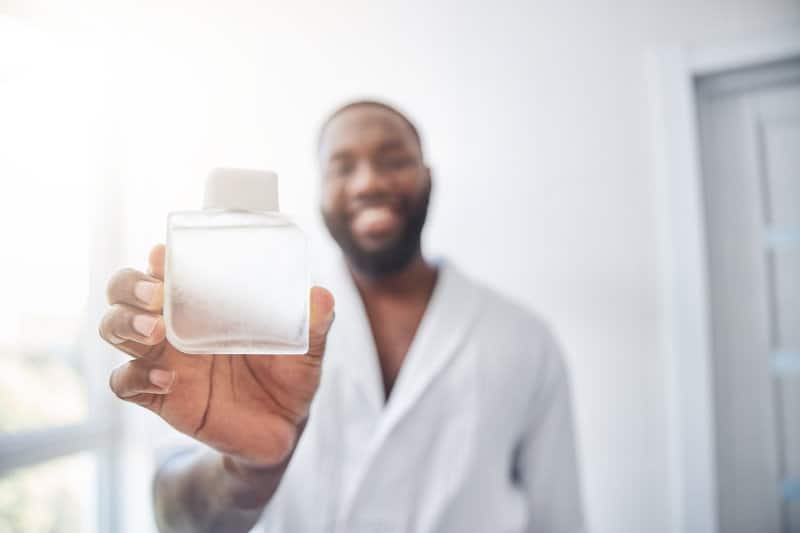No beard care kit is complete without at least one quality beard oil. Beard oil makes your facial hair look and smell fantastic. It repairs and nourishes hair and face. However, one product won’t optimize your beard all by itself, so you have to wonder what will make your beard oil more effective.
Beard oil becomes even more effective when you augment it with oils that will further nourish your beard. Your beard oil needs to be part of a multifaceted face care routine, and it should be applied and stored correctly.
To maximize your beard oil’s effectiveness, it’s important to understand what it’s made from and how it works. Then, you can optimize your beard care routine.
What’s in Beard Oil?
The base of all beard oils is a carrier oil. This moisturizes both beard and skin and reduces the itching and dandruff that comes with having a thicket of hair on your face. Carrier oils also dilute the far more caustic essential oils.
Here are the most common carrier oils in beard products:
- Jojoba Oil.
- Castor Oil.
- Coconut Oil.
- Argan Oil.
- Sweet Almond Oil.
- Grape Seed Oil.
- Meadowfoam Seed Oil.
- Sunflower Seed Oil.
All these oils provide the fatty acids and nutrients your beard needs. They give it a lush sheen without making it look greasy. Of the oils listed above, jojoba, sweet almond, grape seed, and castor oils are the most common. Argan oil and meadowfoam seed oils are common in expensive boutique products.
Mixed with the carrier oils are essential oils. These are plant, tree, flower, and fruit extracts like the ones you find in cologne or perfume. They provide beard oil with its decadent, musky aromas.
Finally, all beard oils contain some form of preservative to stabilize the carrier and essential oils, which would deteriorate and spoil easily otherwise.
How Beard Oil Works
In many ways, the term beard oil is a misnomer. While the product is undoubtedly designed for beardsmen, it is as much for the underlying skin as the hair itself. Indeed, one of beard oil’s primary functions is to soothe and moisturize skin to prevent irritation and flaking under your beard.
Beard oil does have a role to play on the beard itself, though. The aforementioned carrier oils that comprise most of the product contain enzymes and acids that shore up the structure of your facial hair. While you massage or brush the oil into your face, it coats the beard, rejuvenating the follicles.
Of course, the oil also imparts a desirable shine and aroma. Still, you want to make sure you’re using your beard oil in a way that ensures maximum utility.
When and How Often to Apply Beard Oil

Making beard oil most effective begins by knowing how to use it and how often.
You’ve probably heard that the best time to apply beard oil is after a shower. That is correct, but that does not mean you should use it on a soaking wet beard. The most significant factor is that your beard (and face) are clean.
You should dry your beard so that it is only slightly damp before application. This will ensure that the clean hair and skin adhere to and absorb the oil.
How often you apply beard oil depends on the kind of facial hair you have and the climate you live in. If you have a one-inch beard and live in a temperate climate with moderate humidity, you can probably get by with one application every couple of days.
On the other hand, if you’re rocking a ZZ Top special in dry heat, you’ll want to oil that bad boy in every morning and before bed each night.
How to Augment Beard Oil
Here’s where things get interesting. As mentioned before, the healing, moisturizing agent in beard oil is the carrier oil. If you really want to kick your beard oil up to the next level, take a look at its ingredients, then add in a little supplemental oil to it.
For example, if your favorite product is castor oil-based, why not cut it with some jojoba oil? If it’s grape seed oil-based, how about following the application with a little coconut oil?
If you want to treat yourself, splurge on some argan oil. It’s packed with antioxidants to promote healthy hair, plus it imparts a soft, luminous quality to beards. Argan ain’t cheap, but it is worth every dime!
How to Store Beard Oil
For many guys, facial hair is the very last thing to get attention before leaving for work. It’s all too easy to leave the bottle or tin sitting in direct sunlight with the cap half off all day.
As we’ve discussed, beard oil is composed of many sensitive, easily spoiled ingredients. These products might contain preservatives, but they should still be treated with care. To ensure high quality and longevity, store them firmly sealed, away from intense sunlight, at room temperature.
Also, here’s a pro-tip for users of dry-oil balms: keep the container stored upright at all times. If you leave it unattended on its side, it might melt and resettle as an unusable mass.
Common Mistakes that People Make Using Beard Oil

Folks might use beard oil for years without realizing that they’re not applying it correctly. You can have the finest, priciest product on the market, but if you aren’t using it right, it won’t work to its full potential.
Here are some common mistakes people make with beard oil that reduces its effectiveness:
- Don’t just coat your beard hair. The oil must permeate to the skin below to work.
- Don’t use too much. It will give you a greasy look without any additional benefit.
- Don’t douse your beard from the bottle. Drip the oil onto your fingertips, then massage it in.
- Check for unblended oil clumps in your beard and brush or comb them through.
Important Oil-Adjacent Products and Equipment
Finally, you won’t get the most out of your beard oil unless you treat it as a fully integrated part of a larger beard health regimen. This means compiling a high-quality beard care kit, including:
- Beard-specific shampoo and conditioner.
- A good pair of shears and an electronic trimmer.
- A beard-brush with strong bristles made from boar, horsehair, or a quality synthetic.
- At least one wood beard comb.
Now, we know it might seem like an indulgence to build such a comprehensive collection for your beard, but it’s worth it. If you’ve taken the time to choose a high-quality beard oil, you should go the extra mile. This ensures you are putting adequate care into the sculpting and washing of your beard and that you have proper instruments for applying and blending the oil.
In Conclusion
Choosing a fine oil for your beard is only the start of the process. You need to think about what components are (and are not) in your beard oil. With that knowledge, you can augment it with additional salves and tinctures.
It’s also key to know the correct way to apply beard oil. For more detailed information on this, be sure to read our discussions of mustache oils and frugal beard oil alternatives.

